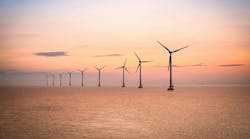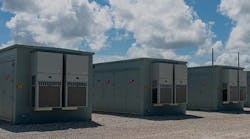The U.S. Department of Energy (DOE) has released findings from the Atlantic Offshore Wind Transmission Study, a two-year study evaluating transmission options to support offshore wind energy deployment along the Atlantic Coast of the U.S.
According to the study, strategically linking some offshore wind energy projects through offshore transmission networks will help lower electricity production costs, enhance the U.S. grid reliability, and reduce dependence on fossil fuels with minimal disruptions to oceanic ecosystems, after 2030. On the contrary, immediate projects will connect individually to the onshore grid.
The Atlantic Offshore Wind Transmission Action Plan, partially funded through the Inflation Reduction Act, was also finalized. It outlined immediate actions required to connect the first generation of Atlantic offshore wind projects to the electric grid, as well as longer-term efforts to increase transmission over the next several decades.
The findings support the Biden-Harris Administration’s goals of reaching 30 GW of offshore wind energy by 2030 and revealing a pathway to 110 GW or more by 2050 with equitable, affordable, and timely transmission access for offshore wind.
The study was conducted by researchers from DOE’s National Renewable Energy Laboratory and Pacific Northwest National Laboratory to analyze various potential scenarios for offshore transmission off the Atlantic coast of the U.S.
It not only predicts the costs and benefits of each pathway, accounting for grid reliability, resilience, and potential cable routes, considering environmental and siting constraints but also fills gaps identified in prior analyses including by providing a multi-regional planning perspective.
The report revealed that offshore wind energy development presents an opportunity to add transmission capacity to the East Coast’s power system, with the highest benefit from offshore transmission connecting areas across grid regions.
This will not only allow offshore wind transmission to provide energy to areas of high demand and reduce grid congestion, increase system reliability, lower curtailment, and flow power from lower-price regions to higher price regions, reducing costs for consumers but also reduce generation from fossil-fueled-powered units by 5.5 – 9.2 TWh per year in 2050.
The study found that connecting offshore wind platforms together to create transmission networks outweighs the costs, often by a ratio of 2 to 1 or more, when compared with each project having its own isolated transmission connections.
The report identified potentially feasible transmission corridors taking into consideration ocean co-use constraints such as military zones and shipping channels, as well as marine protected areas and artificial reefs. Actual potential points of interconnection are required to be determined by transparent processes and the locations used for the study will not be the precise suggestions.
The study, which was based on deploying 85 GW of offshore wind off the Atlantic Coast by 2050, recommended building offshore transmission in phases to help reduce development risk. It also suggested early implementation of HVDC technology standards to support new transmission and facilitate future network expansion.
Increased intra-regional coordination, shared transmission lines, and an offshore network of HVDC interlinks will efficiently bring critical, renewable offshore wind energy onshore over the mid- to long-term.
While the study and report was funded by DOE’s Wind Energy Technologies Office, the Atlantic Offshore Wind Transmission Action Plan was led by DOE’s Grid Deployment Office, in partnership with the Wind Energy Technologies Office and the Department of Interior’s Bureau of Ocean Management.


